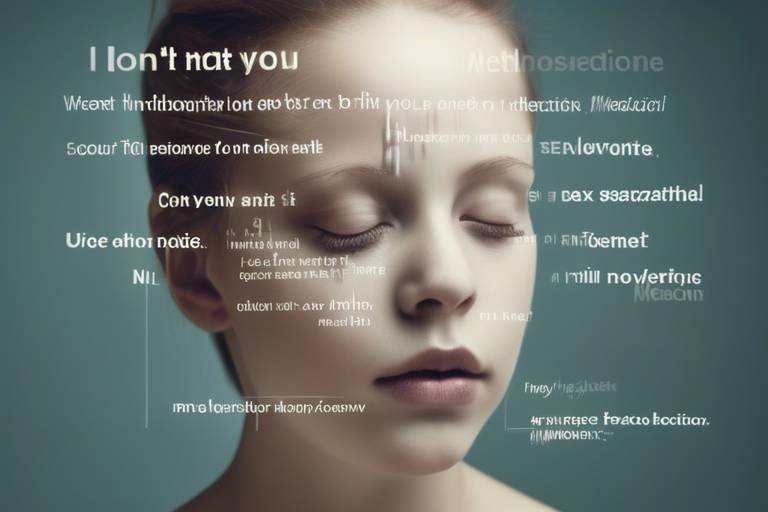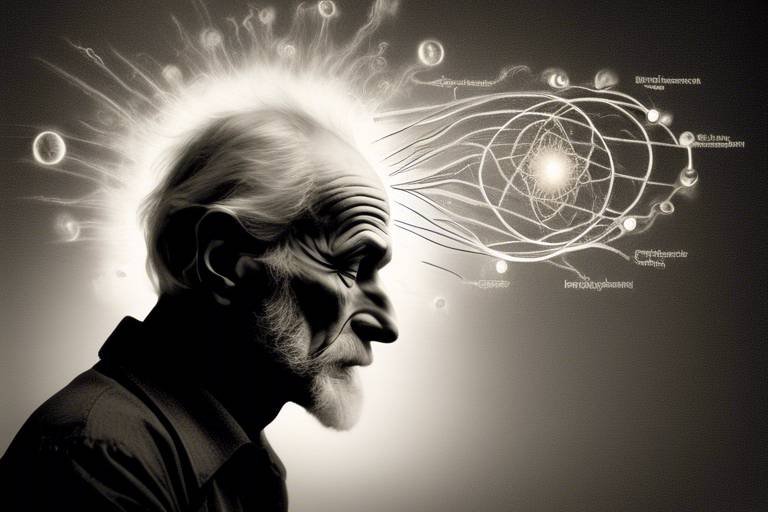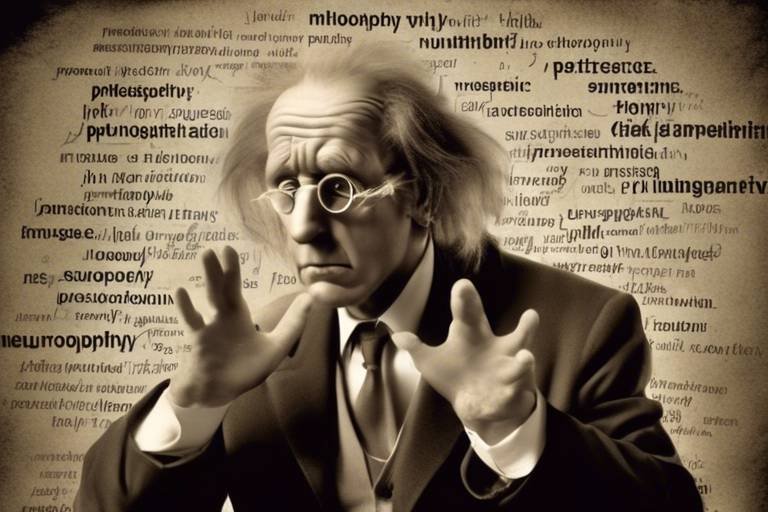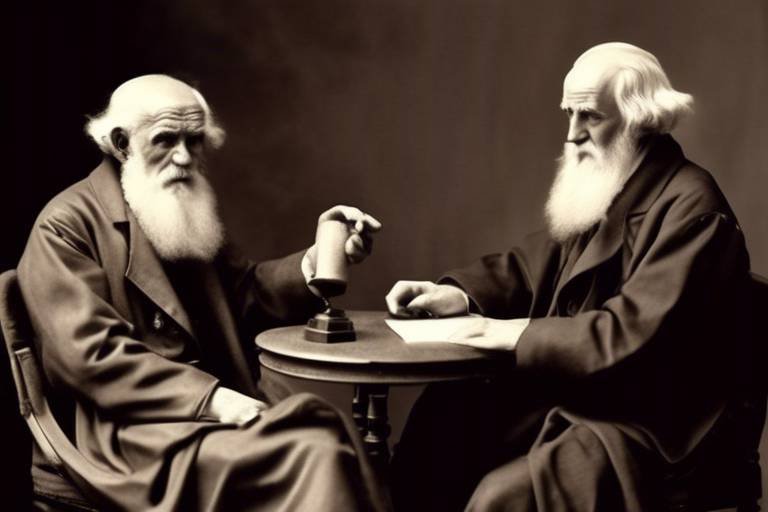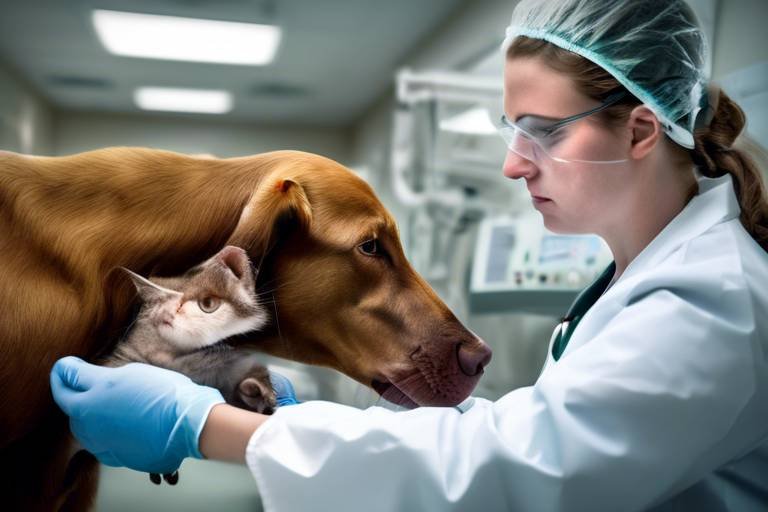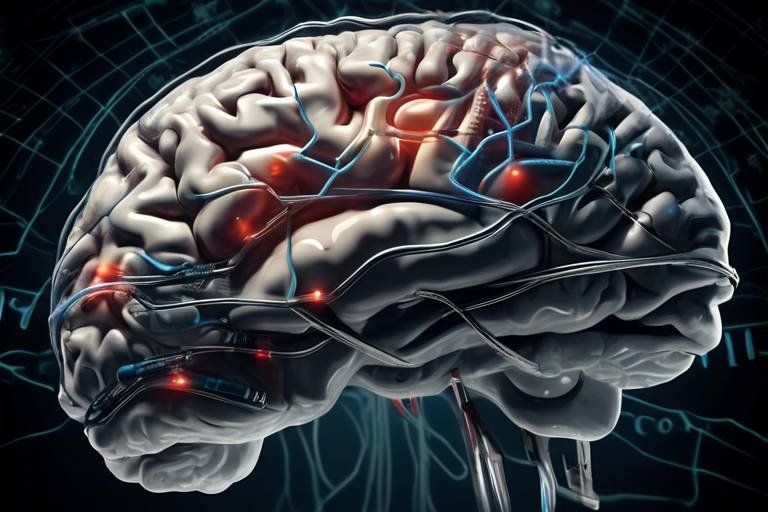Philosophical Undertones in Aesthetic Medicine
Aesthetic medicine is not just about enhancing physical appearance; it delves deep into the philosophical realms of beauty, identity, and ethics. As we navigate through the intricacies of this field, we uncover a tapestry woven from the threads of cultural norms, personal aspirations, and moral dilemmas. Imagine standing in front of a mirror, contemplating not just the reflection before you, but the very essence of who you are and what beauty means to you. This introspection is at the heart of aesthetic medicine, where every procedure can spark profound questions about self-worth and societal expectations.
In this exploration, we will embark on a journey through the ethical landscapes that govern aesthetic practices, scrutinizing the responsibilities that practitioners hold towards their patients. Are we merely products of societal standards, or do we possess the agency to define our own beauty? As we peel back the layers, we will encounter the philosophical interpretations of beauty that have evolved over centuries, from the ideal forms proposed by Plato to the contemporary views that challenge traditional aesthetics. Each perspective offers a unique lens through which we can evaluate the implications of aesthetic interventions on personal identity.
Moreover, the influence of historical context and media representations cannot be overlooked. Throughout history, beauty standards have shifted dramatically, reflecting the values and beliefs of different cultures. Today, social media acts as both a mirror and a mold, shaping our perceptions of beauty and driving individuals toward aesthetic procedures. The question arises: are we chasing an ideal, or are we losing sight of our authentic selves in the process? As we navigate this complex landscape, we will also examine how technological advancements are reshaping our understanding of beauty and the ethical dilemmas that accompany these changes.
Ultimately, the intersection of philosophy and aesthetic medicine invites us to reflect on our identities and the choices we make. It challenges us to consider the implications of self-modification and the pursuit of beauty in a world that often prioritizes appearances over authenticity. As we delve deeper into these philosophical undertones, we will uncover the rich tapestry of human experience that lies at the heart of aesthetic medicine.

The Ethics of Aesthetic Procedures
When we dive into the world of aesthetic medicine, we enter a realm where beauty meets ethics, and the implications of our choices can ripple through our lives in unexpected ways. The ethical considerations surrounding aesthetic procedures are as intricate as the procedures themselves. One of the primary dilemmas is the concept of informed consent. Patients often walk into clinics with dreams of transformation, but how many truly understand the risks, benefits, and the potential emotional fallout of these interventions? Informed consent is not just a signature on a document; it’s about ensuring that patients are fully aware of what they are stepping into, both physically and psychologically.
Moreover, there’s a lurking concern about the potential for exploitation. Aesthetic medicine can sometimes prey on vulnerabilities, particularly in a society that increasingly equates beauty with worth. Practitioners have a responsibility to navigate this delicate landscape with care and compassion. Are they merely technicians executing a procedure, or do they hold a more profound duty towards their patients' emotional and psychological well-being? The line can blur, and it's essential for professionals to maintain an ethical compass that prioritizes patient welfare over profit margins.
In addition to these concerns, we must consider the broader societal implications. Aesthetic procedures can reinforce certain beauty standards, leading to a cycle where individuals feel pressured to conform to an often unattainable ideal. This phenomenon raises questions about responsibility—not just for the practitioners but for society as a whole. Are we creating a culture that values appearance over authenticity? Is our obsession with aesthetic enhancement steering us away from embracing natural beauty and diversity?
To further illustrate these ethical dilemmas, let’s look at a hypothetical scenario. Imagine a young woman, Emma, who feels inadequate because of societal pressures exacerbated by social media. She decides to undergo a cosmetic procedure, believing it will solve her self-esteem issues. However, after the procedure, she finds herself in a cycle of dissatisfaction, constantly chasing the next ideal. This situation highlights the potential emotional risks involved in aesthetic procedures, emphasizing the need for practitioners to engage in thorough discussions about the psychological implications of such transformations.
In conclusion, the ethics of aesthetic procedures is a multifaceted issue that demands careful consideration from all parties involved. As we navigate this complex landscape, it’s crucial to foster an environment where informed decisions are made, vulnerabilities are respected, and the pursuit of beauty does not overshadow the essence of our humanity. By addressing these ethical concerns, we can move towards a more compassionate and responsible approach to aesthetic medicine.
- What is informed consent in aesthetic medicine?
Informed consent refers to the process through which patients are educated about the risks, benefits, and alternatives of a procedure before agreeing to undergo it. - How can practitioners avoid exploiting patients?
Practitioners can avoid exploitation by prioritizing patient welfare, engaging in open conversations about motivations for procedures, and ensuring that patients have realistic expectations. - What are the societal implications of aesthetic procedures?
Aesthetic procedures can reinforce narrow beauty standards, impacting self-esteem and encouraging a culture that may prioritize appearance over authenticity.

Defining Beauty: Philosophical Perspectives
When we think about beauty, it’s not just about what pleases the eye; it’s a complex tapestry woven from threads of culture, history, and personal experience. Philosophers have long grappled with the question of what constitutes beauty, and their insights can illuminate our understanding of aesthetic medicine today. From Plato's ideal forms to the more contemporary views of thinkers like Kant and Nietzsche, each perspective offers a unique lens through which to view beauty.
Plato famously posited that beauty is an ideal form, an abstract concept that transcends the physical world. He believed that true beauty exists in the realm of ideas, and what we see in the material world is merely a shadow of that perfection. This notion raises intriguing questions in aesthetic medicine: if beauty is an ideal, are we striving to achieve a mere reflection of something unattainable? Or can medical interventions help us align more closely with these ideals? In contrast, Kant argued that beauty is subjective, residing in the eye of the beholder. This perspective emphasizes personal experience and emotional response, suggesting that aesthetic procedures could be tailored to individual desires and perceptions of beauty.
Moreover, Nietzsche challenged traditional notions of beauty by asserting that it is a construct shaped by societal norms and power dynamics. He argued that what is considered beautiful is often dictated by prevailing cultural standards, which can change over time. This idea is particularly relevant in the context of aesthetic medicine, where societal pressures can drive individuals to seek procedures that align with fleeting beauty trends. The question then arises: are we genuinely pursuing our own definitions of beauty, or are we conforming to societal expectations?
To further understand the evolution of beauty standards, we can look at the historical context. For instance, during the Renaissance, beauty was often associated with symmetry and proportion, reflecting the era's fascination with classical ideals. Fast forward to the 21st century, and we see a shift towards more diverse representations of beauty, influenced by globalization and social media. This evolution highlights the fluid nature of beauty standards and invites us to consider how aesthetic medicine can adapt to these changes.
In this regard, the influence of media cannot be overlooked. Media representations play a crucial role in shaping public perceptions of beauty, often creating unrealistic ideals that many strive to achieve. This pressure can lead individuals to pursue aesthetic procedures in hopes of attaining the 'perfect' look, raising ethical concerns about self-esteem and identity. The constant barrage of images on platforms like Instagram and TikTok can distort our understanding of beauty, making it essential to critically examine what we perceive as beautiful.
Finally, it’s important to acknowledge the global perspectives on beauty. Different cultures have their own definitions and standards, which can vary dramatically. For example, while Western beauty ideals often emphasize youth and slimness, other cultures may celebrate fuller figures or unique features. This cultural relativism in beauty standards poses philosophical questions about the universality of beauty and the implications for aesthetic medicine practices around the world.
In summary, the philosophical perspectives on beauty remind us that our understanding of aesthetic appeal is not static; it is a dynamic interplay of ideals, societal influences, and personal experiences. As we navigate the world of aesthetic medicine, these insights challenge us to reflect on our motivations and the ethical implications of our choices.
- What is the philosophical definition of beauty? Beauty is often viewed as a subjective experience influenced by cultural norms, historical context, and personal perceptions.
- How do societal standards impact aesthetic medicine? Societal standards can create pressures that drive individuals to seek aesthetic procedures, often based on fleeting beauty ideals.
- Are there universal standards of beauty? While some aspects of beauty may be universally appreciated, definitions of beauty can vary greatly across different cultures.
- How can understanding philosophy help in aesthetic medicine? Philosophical insights can encourage practitioners and patients to critically examine their motivations and the ethical implications of aesthetic interventions.

Historical Context of Beauty Standards
Throughout history, the concept of beauty has undergone tremendous transformations, shaped by cultural, social, and political influences. In ancient civilizations, such as those in Egypt and Greece, beauty was often associated with divine qualities. For instance, the Egyptians adorned themselves with cosmetics and jewelry, believing that enhancing one's appearance was a way to honor the gods. Similarly, the Greeks celebrated physical perfection, epitomized by their sculptures and art, which depicted idealized human forms. This emphasis on symmetry and proportion laid the groundwork for Western ideals of beauty that persist today.
As we move through history, we see that beauty standards are not static; they evolve alongside societal changes. The Renaissance period marked a significant shift, where artists like Botticelli and Michelangelo portrayed beauty through a lens of humanism, celebrating the individual and the natural world. This era emphasized curves and a fuller figure, contrasting sharply with the slender ideals that would emerge in later centuries. The Victorian era introduced its own set of standards, where modesty and restraint became the hallmarks of beauty, with women often donning corsets to achieve an hourglass figure.
Fast forward to the 20th century, and we witness a dramatic shift influenced by industrialization and media. The rise of Hollywood in the 1920s brought forth icons like Marilyn Monroe and Audrey Hepburn, who redefined beauty with glamour and charisma. The post-war era saw the emergence of the "ideal" body type, often epitomized by thinness, leading to the widespread popularity of diet culture. This shift was not merely about aesthetics; it reflected deeper societal changes, including women's liberation movements that challenged traditional roles and expectations.
Interestingly, the late 20th and early 21st centuries have seen a backlash against these narrow definitions of beauty. The body positivity movement encourages individuals to embrace their natural bodies, irrespective of societal standards. This cultural shift has opened the door for diverse representations of beauty, challenging the traditional norms that have dominated for centuries. Today, beauty is increasingly recognized as a spectrum, influenced by factors such as race, age, and body type.
In summary, the historical context of beauty standards is a fascinating tapestry woven from various threads of culture, art, and societal values. Each era has left its mark, influencing not only how we perceive beauty but also how we engage with aesthetic medicine. Understanding this historical backdrop is crucial in navigating the contemporary landscape of beauty, where the lines between enhancement and authenticity are often blurred.
- What are the main influences on beauty standards throughout history?
Beauty standards have been shaped by cultural beliefs, artistic movements, and social changes, often reflecting the values and norms of their time. - How have modern movements impacted perceptions of beauty?
Movements like body positivity and inclusivity have challenged traditional beauty norms, promoting a broader understanding of beauty that encompasses diversity. - Why is it important to understand the history of beauty standards?
Understanding the evolution of beauty standards helps us critically engage with contemporary practices in aesthetic medicine and appreciate the complexities of identity and self-perception.

Influence of Media on Beauty Norms
In today's world, the media plays an undeniable role in shaping our perceptions of beauty. From glossy magazine covers to the ever-present social media feeds, the images we consume daily can create a powerful narrative about what is considered attractive. These portrayals often set unrealistic standards, leaving many individuals feeling inadequate or pressured to conform. The constant barrage of edited images can distort our understanding of beauty, leading to a culture where comparison becomes the norm.
Consider this: when was the last time you scrolled through your social media and didn’t come across a picture of someone who seemed to embody the 'perfect' look? This phenomenon can lead to a vicious cycle where individuals feel compelled to undergo aesthetic procedures to match the idealized images they see. The media not only highlights certain beauty standards but also perpetuates them through endorsements and advertising. It's a classic case of cause and effect—the more we see something, the more we believe it to be true.
Moreover, the impact of media isn't just limited to the individual level; it extends to societal norms as well. For instance, the rise of influencers and celebrities endorsing cosmetic procedures has normalized the idea that one must enhance their appearance to be deemed attractive. This shift raises important questions about authenticity and self-worth. Are we valuing ourselves based on our intrinsic qualities, or are we allowing the media to dictate our self-perception?
To better understand the media's influence on beauty norms, consider the following points:
- Representation: The lack of diversity in media representations can lead to a narrow definition of beauty that excludes many individuals.
- Filters and Editing: The use of filters and editing tools has created a skewed perception of reality, where even minor imperfections are deemed unacceptable.
- Celebrity Culture: The glorification of celebrities who openly discuss their cosmetic procedures can create pressure for others to follow suit.
As a result, many people may feel that undergoing aesthetic procedures is a necessary step to fit into societal expectations. This raises profound ethical questions about the responsibility of media creators and influencers. Are they aware of the impact their portrayals have on the self-esteem and body image of their audience? How can they contribute to a more inclusive and realistic representation of beauty?
In summary, the media's influence on beauty norms is a complex interplay of representation, societal expectations, and individual self-perception. As we navigate this landscape, it’s crucial to critically assess the images we consume and recognize the power they hold over our understanding of beauty. After all, true beauty transcends the superficial; it encompasses authenticity, confidence, and the uniqueness of every individual.
- How does media representation affect self-esteem?
Media representation can significantly impact self-esteem by setting unrealistic beauty standards that many feel pressured to meet.
- What role do influencers play in shaping beauty norms?
Influencers often promote specific beauty ideals through their platforms, which can lead to increased pressure on their followers to conform to these standards.
- How can we combat negative media influences on beauty perception?
By promoting diverse representations in media and encouraging body positivity, we can help shift the focus from narrow beauty ideals to a broader understanding of beauty.

Global Perspectives on Beauty
When we talk about beauty, it's fascinating to realize that this concept is not uniform; instead, it's a vibrant tapestry woven from the threads of different cultures, traditions, and histories. What one society considers beautiful can be entirely different from another's perspective. For instance, in Western cultures, the ideal of beauty has often been represented by slim figures and youthful appearances, heavily influenced by media portrayals and celebrity culture. However, in various African cultures, beauty may be associated with fuller figures, which symbolize health and fertility. This divergence raises an intriguing question: how do these cultural definitions of beauty impact individuals' choices in aesthetic medicine?
In many Asian cultures, beauty standards can be influenced by historical and philosophical beliefs. For example, in Japan, the concept of ‘wabi-sabi’ celebrates imperfection and transience, which contrasts sharply with the pursuit of flawless skin and features seen in other regions. This cultural appreciation for the natural aging process can lead to a different approach to aesthetic procedures, focusing more on subtle enhancements rather than dramatic changes. Thus, understanding these global perspectives allows us to see that beauty is not merely a personal choice; it is deeply rooted in cultural identity.
Moreover, globalization has introduced a fascinating blend of beauty ideals. With the rise of social media, individuals are exposed to a plethora of beauty standards from around the world, leading to a phenomenon known as ‘cultural appropriation’ in beauty practices. For instance, the popularity of Korean beauty products and techniques has surged globally, influencing how people perceive beauty and prompting many to embrace these trends. Yet, it also raises ethical concerns about the commodification of cultural practices. Are we genuinely appreciating these diverse beauty standards, or are we merely appropriating them for our consumption?
As we explore these global perspectives, it’s essential to recognize that beauty is not a static concept but a dynamic one that evolves with society. The impact of travel, media, and technology has significantly shaped our understanding of beauty, leading to a more inclusive definition that appreciates diversity. But with this inclusivity comes the challenge of maintaining authenticity. Are we still true to ourselves when we adopt beauty standards from cultures that are not our own? This question leads us to reflect on our individual identities and the choices we make in aesthetic medicine.
In conclusion, the global perspectives on beauty serve as a reminder of the rich diversity that exists in the world. They challenge us to rethink our own perceptions and encourage a broader understanding of what it means to be beautiful. As we navigate the complex landscape of aesthetic medicine, it's crucial to embrace this diversity, ensuring that our choices reflect not only personal desires but also an appreciation for cultural uniqueness. After all, beauty is not just skin deep; it’s a reflection of our values, beliefs, and the world we inhabit.
- What are some common cultural differences in beauty standards? Different cultures prioritize various features, such as body shape, skin tone, and even age, leading to diverse beauty ideals.
- How does globalization affect beauty standards? Globalization allows for the exchange of beauty practices and ideals, which can lead to both appreciation and appropriation of different cultures.
- Can aesthetic medicine contribute to cultural identity? Yes, aesthetic procedures can reflect cultural values and personal identity, influencing how individuals perceive themselves within their cultural context.
- What role does media play in shaping beauty norms? Media representations often dictate societal beauty standards, creating pressure for individuals to conform to those ideals.

Identity and Self-Perception
In today's world, where aesthetic procedures are becoming increasingly common, the relationship between identity and self-perception is more complex than ever. Many individuals seek aesthetic enhancements not just to alter their physical appearance, but to reshape how they see themselves and how they believe they are perceived by others. This raises a fundamental question: What does it mean to be authentic in a world where we can modify our bodies at will?
For many, the pursuit of beauty through medical interventions can lead to a profound transformation in self-image. The psychological impact of these changes can be both liberating and confounding. Imagine looking in the mirror and seeing a version of yourself that aligns more closely with your internal self-concept. For some, this can boost confidence and enhance social interactions. However, for others, it can lead to an existential crisis, where the line between the 'real' self and the 'modified' self blurs. This dichotomy raises philosophical questions about the essence of identity: Is our identity defined by our physical appearance, or is it rooted deeper in our thoughts, experiences, and emotions?
Moreover, the influence of societal standards on personal choices in aesthetic medicine cannot be understated. As we navigate through a world bombarded with images of idealized beauty, many individuals feel pressured to conform to these standards. This pressure can create a cycle where self-worth becomes tied to physical appearance, leading to a potential identity crisis when one does not meet these societal expectations. The question then arises: Are we truly enhancing our identity, or are we merely conforming to external pressures?
The implications of these considerations are vast. When individuals choose to undergo aesthetic procedures, they often do so with the hope of achieving a more favorable self-image. However, this journey can sometimes lead to unforeseen consequences. For instance, the psychological effects of undergoing such procedures can vary widely. While some may experience a significant boost in confidence, others might find themselves grappling with feelings of inadequacy or even regret. This duality of experience highlights the need for a deeper understanding of how aesthetic medicine interacts with our self-perception and identity.
To better illustrate these complex interactions, consider the following table that summarizes the potential outcomes of aesthetic procedures on identity and self-perception:
| Outcome | Positive Effects | Negative Effects |
|---|---|---|
| Increased Confidence | Enhanced social interactions, improved self-esteem | Over-reliance on appearance for self-worth |
| Identity Transformation | Alignment of self-image with internal identity | Confusion about 'true' self |
| Social Pressure | Desire to express individuality | Conformity to unrealistic beauty standards |
Ultimately, the relationship between aesthetic procedures, identity, and self-perception is a nuanced topic that warrants careful consideration. As we continue to explore the philosophical undertones of aesthetic medicine, it becomes increasingly clear that the choices we make regarding our bodies are not merely superficial—they are deeply intertwined with our understanding of who we are and who we wish to become. In a world where beauty can be crafted, how do we define authenticity?
- What is the impact of aesthetic procedures on self-esteem?
Aesthetic procedures can lead to increased self-esteem for some individuals, while others may struggle with their self-image post-procedure. - Can aesthetic enhancements affect personal identity?
Yes, they can alter how individuals perceive themselves and how they believe others perceive them, leading to a complex relationship with identity. - How do societal beauty standards influence personal choices?
Societal standards can create pressure to conform, which may drive individuals to seek aesthetic enhancements to fit in or feel accepted.

The Role of Technology in Aesthetic Medicine
In an era where technology permeates every facet of our lives, aesthetic medicine is no exception. The integration of advanced technologies has not only transformed the way procedures are performed but also reshaped our understanding of beauty itself. Imagine stepping into a clinic where virtual reality simulations allow you to visualize potential outcomes of a procedure before making a decision. This technology-driven approach empowers patients, providing them with a sense of control over their bodies and choices. However, it also raises profound questions about the nature of beauty and the authenticity of our self-perception.
One of the most significant advancements in aesthetic medicine is the rise of artificial intelligence (AI). AI tools are revolutionizing how practitioners assess and recommend treatments. For instance, algorithms can analyze facial features and suggest personalized procedures, making the experience tailored and efficient. This shift not only enhances the patient experience but also sparks a debate about the implications of relying on technology for such deeply personal decisions. Are we allowing machines to dictate our standards of beauty? How much of our identity is shaped by algorithms rather than our own desires?
Moreover, technology has facilitated the rise of telemedicine in aesthetic practices. Patients can now consult with specialists from the comfort of their homes, breaking geographical barriers and making aesthetic care accessible to a broader audience. While this convenience is appealing, it also introduces ethical dilemmas. The lack of in-person consultations may lead to miscommunications or unrealistic expectations about results. As we embrace these technological advancements, it’s crucial to maintain a balance between accessibility and the quality of care.
As we delve deeper into the technological landscape, it is essential to consider the implications of 3D imaging and simulation technologies. These tools allow patients to visualize their desired outcomes, providing a clearer understanding of what to expect. However, they also come with the risk of fostering unrealistic expectations. When patients see an idealized version of themselves, they may feel pressured to achieve that look, leading to a cycle of dissatisfaction and over-reliance on aesthetic procedures.
Furthermore, technology is not just influencing the procedures themselves but also the marketing of aesthetic medicine. Social media platforms are flooded with images and videos showcasing 'perfect' transformations, creating a culture where beauty is often equated with surgical enhancement. This phenomenon raises questions about the authenticity of self-presentation in a digital age. Are we curating our identities based on societal pressures fueled by technology? Or are we genuinely expressing our individuality?
As we look to the future, the role of technology in aesthetic medicine will undoubtedly continue to evolve. Emerging technologies like virtual reality and augmented reality may further enhance patient experiences, allowing for even more immersive consultations. However, with these advancements comes the responsibility to critically examine their impact on personal identity and societal norms. The challenge lies in navigating this technological landscape while preserving the essence of what it means to be human.
- How does technology improve safety in aesthetic procedures?
Technological advancements, such as AI and machine learning, enhance the precision of procedures, reducing the risks associated with human error. - What ethical concerns arise from the use of AI in aesthetic medicine?
AI's role in decision-making can lead to questions about accountability, potential biases in recommendations, and the impact on patient autonomy. - Can technology help in managing patient expectations?
Yes, tools like 3D imaging can provide realistic visualizations of expected outcomes, helping patients set more attainable goals. - How does telemedicine impact the patient-practitioner relationship?
While it increases accessibility, it may limit the personal connection that is often essential in aesthetic consultations.

Artificial Intelligence and Beauty
Artificial Intelligence (AI) is revolutionizing the field of aesthetic medicine in ways that were once confined to the realm of science fiction. Imagine walking into a clinic where a sophisticated AI system analyzes your features and suggests the most flattering enhancements tailored specifically for you. Sounds futuristic, right? But this is rapidly becoming a reality, blurring the lines between human intuition and machine learning. As we delve into this fascinating intersection, we must consider the implications it has on our understanding of beauty, identity, and authenticity.
AI-driven technologies are reshaping the landscape of aesthetic procedures, offering a plethora of benefits that enhance both the patient experience and the outcomes of treatments. For instance, virtual consultations powered by AI algorithms allow patients to receive personalized recommendations without stepping foot in a clinic. This not only saves time but also provides a sense of comfort and privacy for individuals who may feel apprehensive about undergoing aesthetic procedures.
Furthermore, AI is capable of analyzing vast amounts of data to predict emerging beauty trends. By examining social media feeds, fashion shows, and celebrity appearances, AI can identify what is trending in real-time. This predictive modeling enables practitioners to stay ahead of the curve, ensuring that they can offer the most sought-after treatments to their clients. However, this raises a critical question: Are we allowing algorithms to dictate our perceptions of beauty? The potential for AI to influence societal norms could lead to a homogenization of beauty standards, where individuality is sacrificed on the altar of conformity.
As we embrace these technological advancements, we must also grapple with the ethical dilemmas they present. For example, the use of AI in aesthetic medicine raises questions about human agency. When a machine suggests a particular look or procedure, does it undermine our ability to make authentic choices about our bodies? Are we merely becoming puppets of technology, losing touch with our own desires and self-perception? This tension between technological influence and personal autonomy is a critical philosophical concern that we must address.
Moreover, as AI continues to evolve, we must consider its impact on the practitioner-patient relationship. Traditionally, this relationship has been built on trust, empathy, and human connection. However, as AI takes on a more prominent role, there is a risk that the human element may become diminished. Patients may find themselves relying on algorithms rather than the expertise and intuition of their practitioners. This shift could lead to a depersonalization of care, where individuals are viewed as data points rather than unique beings with their own stories and aspirations.
In conclusion, the integration of AI in aesthetic medicine offers exciting possibilities, but it also poses significant philosophical questions about beauty, identity, and the essence of being human. As we navigate this uncharted territory, it is essential to strike a balance between embracing innovation and preserving the core values that define our humanity. The future of beauty may very well depend on our ability to harness technology while remaining true to ourselves.
- How is AI used in aesthetic medicine? AI is used for virtual consultations, predictive modeling of beauty trends, and personalized treatment recommendations.
- What are the ethical concerns surrounding AI in beauty? Ethical concerns include the potential loss of human agency and the risk of depersonalizing patient care.
- Can AI influence beauty standards? Yes, AI can analyze trends and suggest popular looks, potentially leading to a homogenization of beauty standards.
- What is the future of AI in aesthetic medicine? The future may involve more advanced technologies that enhance patient care while raising new philosophical questions about identity and authenticity.

Future Trends in Aesthetic Medicine
The landscape of aesthetic medicine is rapidly evolving, influenced by technological advancements, shifting societal norms, and changing perceptions of beauty. As we look towards the future, several key trends are beginning to emerge that could redefine our understanding of aesthetics and the role of medical interventions in achieving them.
One of the most significant trends is the integration of artificial intelligence (AI) into aesthetic practices. AI is not just a buzzword; it is revolutionizing how practitioners assess beauty and recommend treatments. For instance, AI algorithms can analyze facial features and suggest personalized treatment plans that cater to individual needs and preferences. This technology not only enhances the precision of aesthetic procedures but also raises intriguing philosophical questions about human agency. Are we relinquishing our ability to define beauty to algorithms, or are we merely using them as tools to enhance our own perceptions?
Moreover, the rise of virtual reality (VR) and augmented reality (AR) is transforming patient consultations. Imagine walking into a clinic and being able to visualize potential outcomes of aesthetic procedures in real-time. This immersive experience allows patients to make more informed decisions, but it also blurs the lines between reality and simulation. As we embrace these technologies, we must consider the implications for our self-perception and the authenticity of our choices.
As we delve deeper into these advancements, it's essential to recognize the growing emphasis on personalization. In a world where individuality is celebrated, aesthetic medicine is shifting away from one-size-fits-all solutions. Tailored treatments that consider a person's unique genetic makeup, cultural background, and personal preferences are becoming the norm. This trend not only enhances patient satisfaction but also aligns with the philosophical idea that beauty is subjective and deeply personal.
Another noteworthy trend is the increasing demand for non-invasive procedures. As people become more aware of the potential risks associated with surgical interventions, they are gravitating towards options that offer minimal downtime and fewer complications. Treatments such as injectables, laser therapies, and skin rejuvenation techniques are gaining popularity, leading to a significant shift in how we perceive beauty enhancement. This shift raises questions about the societal pressures that drive individuals to pursue aesthetic improvements and the psychological impact of these choices.
In addition to these technological and procedural advancements, we are witnessing a broader cultural shift towards sustainability and ethics in aesthetic medicine. Patients are becoming more conscious of the environmental impact of their choices, seeking out practitioners who prioritize ethical practices and sustainable products. This trend not only reflects changing consumer values but also challenges the industry to adapt and innovate in ways that are both effective and responsible.
As we navigate these trends, it’s crucial to engage in ongoing discussions about the ethical implications and societal impacts of aesthetic medicine. How do these advancements shape our understanding of beauty? What does it mean for our identities when we can modify our appearances with such ease? These questions will undoubtedly guide the future of aesthetic medicine, prompting both practitioners and patients to reflect on the deeper meanings of beauty and self-expression.
- What role does technology play in the future of aesthetic medicine?
Technology, particularly AI and VR, is set to enhance personalization and precision in aesthetic procedures, allowing for more informed patient choices. - Are non-invasive procedures becoming more popular?
Yes, there is a growing preference for non-invasive treatments due to their minimal downtime and lower associated risks. - How are societal values influencing aesthetic medicine?
There is an increasing emphasis on sustainability and ethical practices, reflecting a shift in consumer consciousness regarding the environmental impact of aesthetic choices. - What philosophical questions arise from advancements in aesthetic medicine?
Advancements raise questions about human agency, authenticity, and the subjective nature of beauty, prompting deeper reflections on identity and self-perception.
Frequently Asked Questions
- What are the ethical considerations in aesthetic medicine?
Aesthetic medicine raises several ethical questions, primarily surrounding informed consent and the potential for exploitation. Practitioners have a responsibility to ensure that patients fully understand the risks and benefits of procedures, as well as the emotional and psychological implications involved. It's crucial for physicians to prioritize their patients' well-being over profit.
- How do societal standards of beauty influence individual choices?
Societal standards of beauty are often shaped by historical context, media representations, and cultural norms. These standards can create pressure on individuals to conform, leading them to consider aesthetic procedures. Understanding the philosophical perspectives on beauty can help individuals navigate their own self-perception and choices, rather than simply following trends.
- What role does technology play in aesthetic medicine?
Technology significantly impacts aesthetic medicine, from advanced imaging techniques to artificial intelligence in predictive modeling. These innovations not only enhance the precision of procedures but also raise ethical questions about authenticity and the nature of beauty itself. As technology evolves, so does our understanding of beauty and identity.
- How does cultural relativism affect perceptions of beauty?
Cultural relativism highlights that beauty is not a universal concept but varies across different cultures. Each culture has its own ideals and practices regarding aesthetics, which can lead to diverse interpretations and applications in aesthetic medicine. This diversity invites a broader philosophical discussion about what beauty truly means and how it can be appreciated across different contexts.
- Can aesthetic procedures impact a person's identity?
Yes, aesthetic procedures can significantly alter an individual's self-image and identity. While some may feel empowered by these changes, others might struggle with issues of authenticity and self-acceptance. It's essential to consider the psychological aspects of self-modification, as they can lead to profound implications for one's sense of self.
- What future trends can we expect in aesthetic medicine?
Future trends in aesthetic medicine may include a deeper integration of technology, such as AI and virtual reality, which could revolutionize how we approach beauty and self-improvement. As societal norms evolve, we may also see shifts in philosophical understandings of beauty, leading to more personalized and ethical practices in the field.

